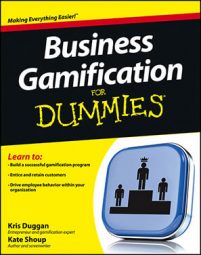You should have a very solid idea of what gameplay behaviors you want to define in your gamification program. A gameplay behavior is defined as a name, a point value, and a time limit.
Behaviors may have the following properties:
Cooldown: This is the time, typically in seconds, that must pass before the user can be rewarded for performing the same gameplay behavior again. This number is based on an estimate of how long it takes a user to perform the given behavior. This is simply one anti-gaming mechanic designed to prevent abuse of the gamification program.
Iconography: This refers to the informative pop-ups that are associated with certain behaviors as shown below. A pop-up could appear as a notification, as a reward, or even to explain rules or which behaviors are worth points. It reinforces the desired behaviors, reminds the user that the game exists, gives feedback for another step in the right direction, communicates the points value of the behavior, and so on.

Activity stream text: In gamification systems with a social component, notifications of rewards given are displayed in an accompanying activity stream. By default, these notifications say something along the lines of, “
on ,” where the bracketed text serves as placeholders for the actual text. You can, of course, change this notification to be whatever you like.
You must do more than simply define a behavior, however. You must take a few additional steps to manage behaviors.
Defining filters: A filter determines whether an incoming gameplay behavior matches a defined behavior. For example, suppose you want to reward users for adding money to a savings plan. A filter will help to determine whether a user has performed that behavior — for example, ignoring when money is added to a checking account or brokerage account.
Defining units: The units component of a behavior has two properties: name and value. Perhaps the most obvious example of a unit would be the ubiquitous mile, given in airline rewards programs. You can create any type of defining unit you want. The value is the amount of that unit to reward when the behavior is performed.
*Defining behavior eligibility: If you’ve implemented anti-gaming mechanisms — rate limiting, count limiting, and so forth — then you’ll need to define this property to determine whether a behavior is eligible for reward.

